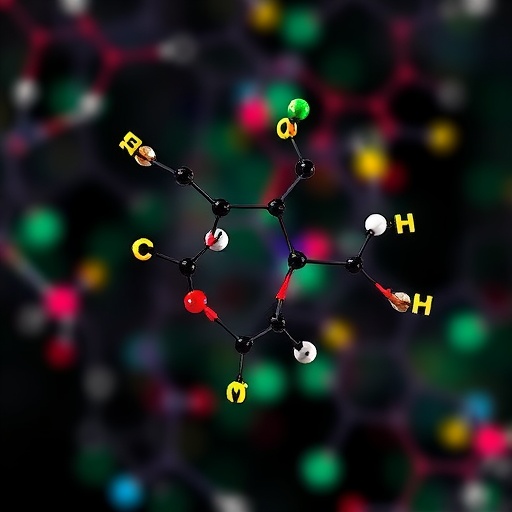
In a groundbreaking study published in Molecular Diversity, researchers Liu, M., Wu, G., and Zhou, Y. delved deep into the synthesis and evaluation of a novel class of compounds. The focus of their investigation was the 3-indolylpyrazole phenoxyacetamide derivatives, designed specifically for their potential use in treating chronic myeloid leukemia (CML). This research not only highlights the innovative approaches within pharmacology but also addresses the pressing need for effective treatments against CML, a type of cancer that affects the blood and bone marrow.
Chronic myeloid leukemia is notorious for its complexity and resistance to conventional therapies. The condition is marked by the overproduction of myeloid cells in the bone marrow, leading to various health complications. One of the longest-standing challenges in oncology is the ability of cancer cells to develop resistance to current treatments, rendering many therapeutic options ineffective over time. Consequently, the need for innovative and efficacious drugs has skyrocketed, prompting researchers to explore new molecular pathways and compounds.
The research team undertook the intricate process of synthesizing various derivatives of 3-indolylpyrazole phenoxyacetamide. Their goal was to create compounds that could specifically target the cellular mechanisms underlying CML progression. By modifying the chemical structure of these derivatives, they aimed to enhance their anti-tumor efficacy while minimizing side effects typically associated with chemotherapy. The chemists applied sophisticated techniques—including organic synthesis and purification processes—to ensure that the compounds produced were both potent and selective.
In their anti-tumor evaluation, the researchers subjected the synthesized derivatives to a series of assays designed to assess their impact on chronic myeloid leukemia cell lines. Through a variety of experiments, including cell proliferation assays and apoptosis induction tests, they meticulously evaluated how each compound affected the viability of these malignant cells. This crucial step not only provided insights into the effectiveness of the compounds but also laid the groundwork for the potential clinical applications of these derivatives.
Crucially, the study extended beyond merely demonstrating anti-tumor activity; it included a thorough mechanistic investigation into how these compounds exert their effects at the cellular level. Understanding the molecular pathways influenced by the 3-indolylpyrazole phenoxyacetamide derivatives offers invaluable insights into not only their therapeutic potential but also the general biology of cancer cell resistance mechanisms. This revelation is particularly vital in the quest to enhance the efficacy of existing therapies and develop new treatment paradigms for CML patients.
The collaborators employed advanced technologies to analyze the interaction of these compounds with specific molecular targets and pathways identified as critical in CML progression. By investigating these interactions, the researchers provided a clearer picture of how these new agents function. This mechanistic insight is critical, as it can guide future research toward optimizing these compounds for greater therapeutic effects.
Furthermore, the work carried out by Liu and the research team contributes to a broader understanding of how chemical modifications can significantly alter the pharmacological properties of compounds. The structural diversity explored in this study exemplifies how tweaking molecular structures can lead to groundbreaking advancements in drug development. This concept is particularly relevant in modern medicinal chemistry, where the design and synthesis of novel therapeutics hinge upon a deep understanding of structure-activity relationships.
The implications of this research are profound, not just for CML but for cancer treatment as a whole. As researchers continue to innovate and explore new chemotherapeutic agents, findings such as those presented by Liu et al. could pave the way for the next generation of targeted therapies. Moreover, the successful synthesis and evaluation of these derivatives exemplify the potential of collaborative research in overcoming the current treatment challenges faced in oncology.
As the study authors articulate, the journey from laboratory synthesis to clinical application is fraught with challenges. However, the promise held by their findings suggests a potential pathway to future breakthroughs in the fight against chronic myeloid leukemia. The meticulous development of these novel compounds and their demonstrated efficacy is a compelling testament to the ongoing quest for effective cancer therapies.
To build upon their findings, the authors expressed a keen interest in advancing their research beyond the laboratory. They recognize that the ultimate goal is to translate their discoveries into clinically relevant therapies that can significantly impact patient outcomes. As such, they call upon the scientific community to embrace collaboration and innovation in the ongoing battle against cancer.
The study’s findings not only add to the growing body of literature exploring new therapeutic options for CML but also serve as a springboard for future investigations. The potential of 3-indolylpyrazole phenoxyacetamide derivatives as anti-tumor agents is backed by empirical data, and their synthesis highlights the importance of chemical research in developing effective cancer treatments.
In conclusion, Liu and colleagues have made significant strides in the realm of cancer drug development. Their pioneering work on 3-indolylpyrazole phenoxyacetamide derivatives exemplifies how targeted approaches in medicinal chemistry can afford new opportunities in the treatment of chronic myeloid leukemia. As the scientific community continues to grapple with the complexities of cancer, studies such as this will undoubtedly play a crucial role in shaping the future of oncology and patient care.
The ramifications of such innovative research extend beyond immediate clinical applications; they speak to a broader narrative within scientific exploration. The relentless pursuit of knowledge, propelled by rigorous research and collaboration, promises to uphold the hope of advancing medical science and improving the lives of those afflicted by chronic illnesses.
Subject of Research: Chronic Myeloid Leukemia and the Synthesis of 3-Indolylpyrazole Phenoxyacetamide Derivatives
Article Title: Correction: Synthesis, anti-tumor evaluation, and mechanistic investigation of 3-indolylpyrazole phenoxyacetamide derivatives against chronic myeloid leukemia cells.
Article References:
Liu, M., Wu, G., Zhou, Y. et al. Correction: Synthesis, anti-tumor evaluation, and mechanistic investigation of 3-indolylpyrazole phenoxyacetamide derivatives against chronic myeloid leukemia cells. Mol Divers (2025). https://doi.org/10.1007/s11030-025-11262-y
Image Credits: AI Generated
DOI: 10.1007/s11030-025-11262-y
Keywords: Chronic Myeloid Leukemia, 3-Indolylpyrazole, Phenoxyacetamide, Anti-Tumor Evaluation, Mechanistic Investigation.
Tags: 3-indolylpyrazole phenoxyacetamideblood cancer researchchronic myeloid leukemia treatmentCML resistance mechanismseffective treatments for CMLindolylpyrazole derivativesmolecular pathways in leukemianovel cancer therapiesoncology drug resistancepharmacology innovationssynthetic medicinal chemistrytargeted cancer drug development





